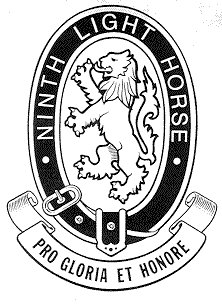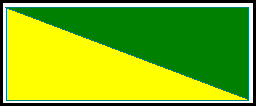
BRIEF HISTORY
OF THE
9th LIGHT
HORSE REGIMENT
(FLINDERS REGIMENT)

 |
BRIEF HISTORY
OF THE |
 |
This
Regiment perpetuates for its territorial title, the name of Captain Mathew Flinders,
R.N., the great navigator and discoverer 1774-1814, whose honoured name rings
over the length and breadth of Australia.
The 9th L.H. Regiment owes
its origins to the formation, in 1895, of two troops of 'South Australian Cavalry
(Lancers)'. by 1899 these troops had evolved into the 'South Australian Mounted
Rifles' (active) and (reserve). The Active part was composed of No 1 Squadron,
Adelaide; No 2 Yankalilla, Second Valley, Inman Valley and Port Victor; No 3 Squadron,
Jamestown, Port Germain and Spalding. The reserve Squadron (No 4) was raised at
Mt Gambier and Wallaroo. In 1901, No's 2 and 7 Squadrons formed the reserve portion
of the South Australian Mounted Rifles until the Federal re-organisation of 1903
when No's 3, 6 and 7 Squadrons became the '17th Australian Light Horse Regiment
(South Australian Mounted Rifles)' under which they were know until 1912. In that
year No's 1, 2 and 3 Squadrons of the 17th were designated the '24th Light Horse
(S.A.M.R.)' remaining as such until 1913 when the territorial title was altered
and they became know as the '24th (Flinders) Light Horse'. They were subjected
to another change in 1918 when the 24th became the '9th (Flinders) Light Horse',
carrrying this nomenclature until 1930, they again altered their designation to
the '9th Light Horse Regiment (Flinders Light Horse)'. The 9th formed part of
the 6th Cavalry Brigade, allotted to the 1st Cavalry Division and had Squadrons
located at Clare, Pt Pirie, Keswick, Gladstone, Crystal Brook, Wirrabara, Jamestown,
Orroroo, Peterborough, Blyth, Snowtown, Burra, Hamley Bridge, Balaclava and Kadina.
Like all pre-federation units the 9th carry the Battle Honours of two
wars and maintained the traditions fought for by their predecessors. They were
represented in the Boer War and have "South Africa 1899-1902" and for the Great
War, Anzac, "Defence of Anzac", Suvia, "Sari Bair", Gallipoli 1915, Rumani, "Maghdaba-Rafah",
Egypt 1915-1917, "Gaza-Beersheba", El Mughar, Nebi Samwill, "Jerusalem", "Jordan
(Es Salt)", "Megiddo", "Sharon", "Damascus", Palestine 1917-1918. Only those Battle
Honours shown in parenthesis are emblazoned on their Regimental Guidon. 'Pro Gloria
et Honore' (For Glory and Honour) is their Regimental motto, their colour patch
is a rectangular divided diagonally from top left hand corner to bottom right
corner, top - green, bottom - gold. For their badge they have a lion rampant within
an oval garter, buckled, bearing the name of the Regiment, and in the base, a
scroll bearing the motto.
The 9th formed an alliance with the 5th
Royal (Inniskilling) Dragoons, 'The Green Horse', the orginal and popular
name of the Regiment, the 'old 5th Horse' (converted into Dragoon Guards in 1788).
The nickname is derived from the colour of the facings of their uniform. The Regiment
served at the Battle of Dettingen in 1743 and also at Warburg and Willems. At
Waterloo, cavalry operations were the sphere of much of their fame, as were the
also the Crimea and South Africa.

History of the Colour Patch
The Regiments and Brigades were given a certain colours depending on the order of march and the Brigade they were attached to. The 9th LH Regiment(Green) was the 2nd Regiment of the 3rd Brigade (Yellow) and therefore the 9th LH Regiment's colour patch was Green over Yellow (Gold).